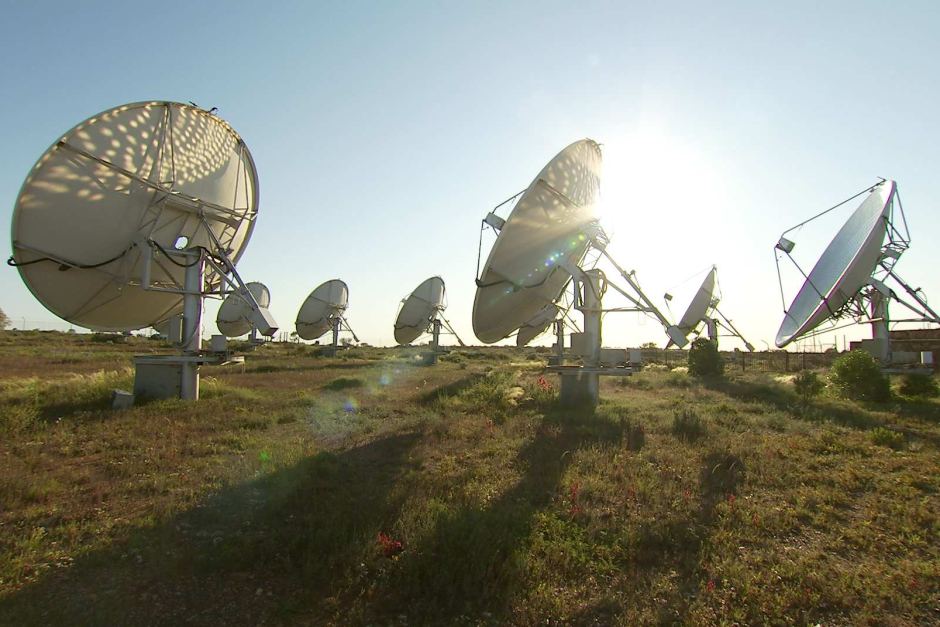
13 Jan Australia’s first commercial concentrated solar power plant at White Cliffs
As with any experiment, you would expect some surprises but the secrets behind Australia’s — if not the world’s — first commercial solar power plant are fascinating.
Wandering camels and goats kept the grass down while sandwiches were toasted and billies boiled by the sun’s rays.
In 1979, the tiny town of White Cliffs in the vast far-west of New South Wales was chosen as the site of a ground-breaking Australian National University (ANU) project to show the sun could power a remote town.
At the time it was built in the 1980s, there was no rooftop solar, and certainly there were no solar mobile phone chargers — there were no mobile phones.
The experiment in one of the most isolated pockets of Australia was a trailblazer of its time but it also became the site of some rather unconventional work practices.
Used two different technologies to generate electricity
Bill Finney, 87, has plenty of tall tales from that time. He was the sole operator of the power station from 1985 until 1994.
His summer uniform consisted of the hat he is still wearing and a pair of shorts.
“I never wore shoes the whole time I was here; the best part of being bare foot? You’re in contact with the cosmic rays of nature,” he said.
White Cliffs’ temperatures in summer hover around the mid-40 degrees Celsius mark.
Located about 250 kilomtres east of Broken Hill, the $1.9 million plant generated electricity from 1982 until 2005, using two different technologies.
Initially, the solar thermal power station concentrated the sun’s energy to produce steam from water which was used to drive a steam engine/generator system.
In 1997 it was transformed using the latest photovoltaic (PV) technology, with the cells directly converting the concentrated sunlight to electricity.
Plant only powers memories nowadays
These days, the plant is still opened up for the occasional tourist, but the only thing it now powers are memories.
“I loved being here and operating the world’s first solar power station,” Mr Finney said.
“White Cliffs here is one of the sunniest and hottest places in Australia and the [Australian] National University picked this because they wanted to pick a small town they could supply with solar power.
“So they picked White Cliffs, a thousand k’s from Canberra, of all places.
“Imagine the trouble they had to come up here, with the ‘roos on the road and all that stuff you know; back and forth all the time.
“But they made it work and showed the world what we could do with solar power and ran the little town.”
 Photo: White Cliffs has many ‘dugout’ homes. The community built homes underground due to the heat and underground mines. (ABC TV Back Roads)
Photo: White Cliffs has many ‘dugout’ homes. The community built homes underground due to the heat and underground mines. (ABC TV Back Roads)The plant had a myriad of teething problems, but it did put the technology on show and proved solar energy could power a remote community, if not very economically.
Mr Finney said he would love to get the plant up and running again, but there was too much red tape.
“I can’t just walk in and bring it back to scratch, which is what I’d like to do,” he said.
“Cost is irrelevant. If you get enthusiasts like myself and others, they would come here and they would uplift this.
“This is something that should be recognised in Australia.”
Today, the former plant is overgrown and a breeding ground for mosquitos.
An old vehicle sits in one corner, exactly where Mr Finney left it when he closed the gates behind him all those years ago.
Power under pressure as locals lit up
Back then, he used to source some local help to keep the weeds and grasses down, particularly after heavy rain.
“I said ‘oh you can’t mow all this; I’ll ask the powers to be if I can get some sheep to put in here’,” Mr Finney explained.
He said at one point he had 12 sheep, a wild goat and some camels he lured into the enclosure with pieces of bread. It was known locally as the Finney Farm.
The plant supplied a limited area of the town — the hospital, school, post office and 12 homes — which had previously relied on diesel generators.
Each got a small allotment of power but the locals liked to see how far they could push the system.
“Each house got two kilowatt of power,” Mr Finney said.
“That would be enough to run an electric jug and an electric toaster, but you could only use two things at a time.”
He recalled one incident where a resident approached him, his hand and blackened thumb wrapped in a bandage.
The man’s wife had had the washing on, a cake in the oven and decided to vacuum — enough to blow the switch to “smithereens” Mr Finney said.
“Those were the days,” he laughed.
“I loved working here; it was beautiful. Days like this, you know, day after day.”
Source: Karen Michelmore, abc.net.au





